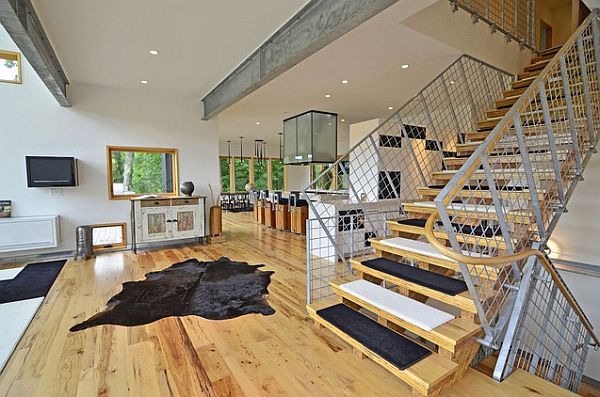Throughout the construction industry and in many branches of manufacturing steel beams have been staple components since the industrial revolution. Strong, ductile and affordable these beams have a plethora of applications making them one of the most popular building blocks in the construction industry. Beams come in a variety of configurations, each with their own strengths and applications. This guide offers an insight into the most common steam beam configurations and their uses in construction and manufacturing.

Universal Column
Used as structural supports, universal columns are often known as I-beams, H-beams or RSJs. Their depth is usually roughly equal to their width and hence the naming convention is to use their width, followed by the UC abbreviation, followed by the weight of the beam per metre. 152 UC 23, for example, means a 152 x 152mm universal column that weighs 23kg per metre.
Used mainly as columns in structural applications, UCs are particularly useful in residential properties as their smaller depth means they are suitable in environments where height is restricted. For more information, or to order UCs, visit wesellrsj.co.uk.
Universal Beam
Also known as I or H beams or RSJs, universal beams are similar in many senses to UCs. The main difference is that a universal beam’s depth is significantly greater than its width, meaning UBs have a greater loading capability than UCs. Because of the discrepancy between their width and depth, their naming convention is slightly difference to UCs. Instead of the one figure before ‘UB’ there are two. An example being 254 x 102 UB 25, which means a 254mm deep, 102mm wide, universal beam that weighs 25kg per metre. To work out the total weight of the beam is simple; just multiply the total length by the weight per meter.
Parallel Flange Channel
C-section beams, also known as parallel flange channels, look a little like half an I-beam and are used in columns, above doors and for supporting floor joists. Their naming convention is three numbers followed by PFC. 150 X 75 X 18 PFC 17.9 for example, is 150mm in height, 75mm in width and 18kg per metre.
Rectangular Hollow Section
Rectangular hollow section beams are not seen as often as I-beams or C-beam although are still used in a variety of applications. There are two varieties of RHSs; those rolled in one piece (hot rolled) and those formed of a flat sheet which is rolled and welded (cold rolled). A 200 x 100 x 8 RHS is a 200m deep, 100m wide beam with an 8mm thick wall.
Square Hollow Section
Very similar to rectangular hollow sections, SHSs are used for columns and in walls. Like RHSs, they are less common than I-beams and C-beams as they are difficult to attach to other beams. The naming convention is the same as an RHS, as are the two distinct forming processes.
Circular Hollow Section
Most commonly used as a column or brace in frame structures, circular hollow sections are formed in a very similar manger to SHSs and RHSs. Spotting a cold rolled CHS is easy as it has a distinct weld along one edge. The naming convention describes the diameter and wall thickness. 21.3 X 3.2 CHS for example, is a beam with a diameter of 21.3mm and a wall thickness of 3.2mm.
Rolled Steel Angle
Rolls steel angles or L shaped beams come in two forms; equal and unequal. Both are used for structural purposes or as brackets and connections. Unequal sections angles have a greater tensile strength and so are also used lintels. All forms of angle beams can be found in balconies, stairs and other types of supports.
The naming convention for equal RSAs and unequal RSAs are the same; both leg lengths and the thickness, followed by RSA. So a 30 x 20 x 3 RSA would be 30mm x 200mm with a 2mm wall thickness. Naturally in an equal RSA both leg lengths are the same.
Flat Section
Finally, flat section beams are used for connections; base plates, tabs, end plates, etc. They can also be used to add strength to beams along a welded edge or to reinforce joists. The naming convention is to use their width and thickness; 40 x 8 Flat for example would be 40mm wide and 8mm thick.
































No Comments
Leave a comment Cancel